cc @sansoneecon.bsky.social
19.08.2025 23:53 — 👍 1 🔁 0 💬 0 📌 0Ercio Munoz
@ercio.bsky.social
Economist at the Inter-American Development Bank. https://www.erciomunoz.org
@ercio.bsky.social
Economist at the Inter-American Development Bank. https://www.erciomunoz.org
cc @sansoneecon.bsky.social
19.08.2025 23:53 — 👍 1 🔁 0 💬 0 📌 0
Households with intersex members (representing nearly 3 percent of Chile's population) have substantively lower incomes than those without. Previous work shows "significant workplace rejection and discrimination." www.sciencedirect.com/science/arti... by @ercio.bsky.social et al.
19.08.2025 23:04 — 👍 6 🔁 2 💬 2 📌 0ICYMI, new working paper that introduces the largest cross-country dataset to date on intergenerational income mobility, covering 87 countries and accounting for 84% of the world’s population. 👇
16.08.2025 19:41 — 👍 1 🔁 0 💬 0 📌 0
We invite applications for two postdoctoral scholars! These 2-year positions start in Aug. 2026 and are based at the GC CUNY Stone Center in NYC. One is focused on #mobility and #poverty, the other on #wealth and/or wealth inequality. Apply by Nov. 3!
#EconSky #Sociology #PoliSciSky
bit.ly/40TZR6J


Several GC CUNY PhD graduates were in the house! I caught up with 3 from GC Econ - Ercio Muñoz, Luis Monroy-Gómez-Franco, & Nishant Yonzan. Also Dirk Witteveen from GC Soc. @ercio.bsky.social
@mgf91.bsky.social @dirkwitteveen.bsky.social @thegraduatecenter.bsky.social
@cunygcsociology.bsky.social

It's a wrap! The 11th ECINEQ conference, hosted by the World Bank & GWU, July 9-11. The conference featured 226 papers presented in 74 sessions - a colossal goldmine of high-quality empirical and theoretical research on multiple facets of #inequality. @lflopezcalva.bsky.social
12.07.2025 22:36 — 👍 15 🔁 5 💬 1 📌 0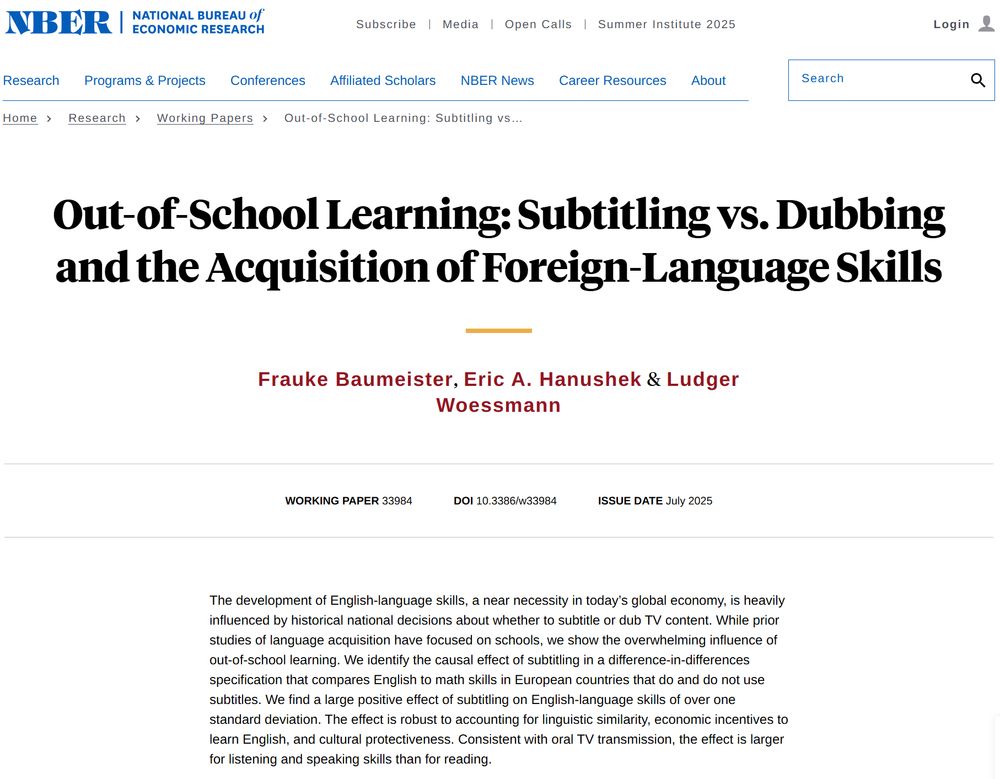
❓Why do the Nordics & Dutch speak English so much better than the Germans, Italians & French?
➡️ New Working Paper:
Out-of-School Learning: Subtitling vs. Dubbing and the Acquisition of Foreign-Language Skills
w/ F. Baumeister & E. Hanushek
www.nber.org/papers/w33984
A 🧵 1/12
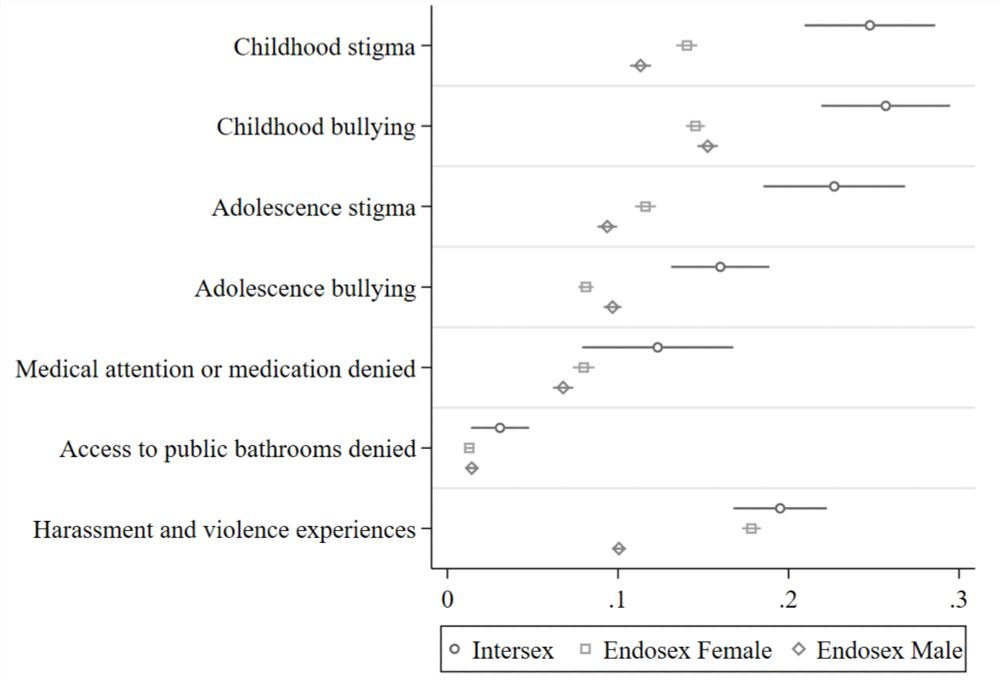
Proportion of individuals reporting experiences of rejection across intersex and endosex.
A look at the experiences of intersex individuals in Mexico reveals disparities affecting their health and livelihoods. Intersex people are born with physical sex characteristics that don’t fit typical definitions of male or female bodies. In PNAS Nexus: academic.oup.com/pnasnexus/ar...
19.05.2025 18:22 — 👍 2 🔁 2 💬 1 📌 0Happy to share that my paper "Intergenerational Educational Mobility within Chile" has been accepted at Estudios de Economía 🤗
Working paper here: dx.doi.org/10.18235/001...

What are the Trends in Inheritance Across Developed Economies? Why is this important & What are the major drivers? Why has the Progressivity of inheritance tax been declining globally? I have talked about these issues in the Economist (@economist.com) podcast "Money Talks".
tinyurl.com/khaekyre

via @minnpop @ipums.bsky.social IPUMS Announces 2024 Research Award Recipients: IPUMS is excited to announce the winners of its annual IPUMS Research Awards. These awards honor both published research and nominated graduate student papers…
15.04.2025 17:10 — 👍 2 🔁 3 💬 0 📌 0
📊Time-use surveys provide unique data to understand productivity, equity and wellbeing, e.g. on paid work, unpaid domestic work, leisure and self-care.
➡️ @ercio.bsky.social from @the_IDB writes about them in this blog post:
blogs.iadb.org/igualdad/en/...
New @ifau.bsky.social WP out with Martin Nybom and Gunnar Brandén: www.ifau.se/Forskning/Pu...
The social mobility literature has organized around three types of measures: intergenerational regressions, sibling correlations, and equality of opportunity (EOp) indices. 1/4
🖥️ LIS is happy to announce data updates:
▶️LIS Data
• Austria – AT22
• Australia – AU20
• Brazil – Annualisation BR80-BR89
• Canada – CA21
• Greece – Annualisation GR02-GR21
• Norway – NO22
▶️LWS Data
• France – FR09/14/17/20
• Norway – NO22
• Slovenia – SI21
www.lisdatacenter.org/news-and-eve...


It was a pleasure to present my latest research with @ercio.bsky.social and @alisto.bsky.social on attitudes toward sexual minorities in Chile at the University of Oxford today 🏳️🌈
03.02.2025 21:23 — 👍 9 🔁 3 💬 2 📌 0
⁉️ Did you know that discrimination based on race and ethnicity affects multiple dimensions of well-being, like education, employment, and health ?
Join the #REPLAC conference
📅 January 30
⏲️ 8.30-3.30 ET
Register ➡️https://lnkd.in/d5HCffKd
@anamibanez.bsky.social @daveevansphd.bsky.social
JOB ALERT: I am looking to hire two full-time pre-doctoral scholar to work with me in projects related to social stratification, human capital formation and health disparities. Data management and statistical analysis skills required. The position offers competitive salary and benefits.
08.01.2025 15:13 — 👍 123 🔁 89 💬 5 📌 4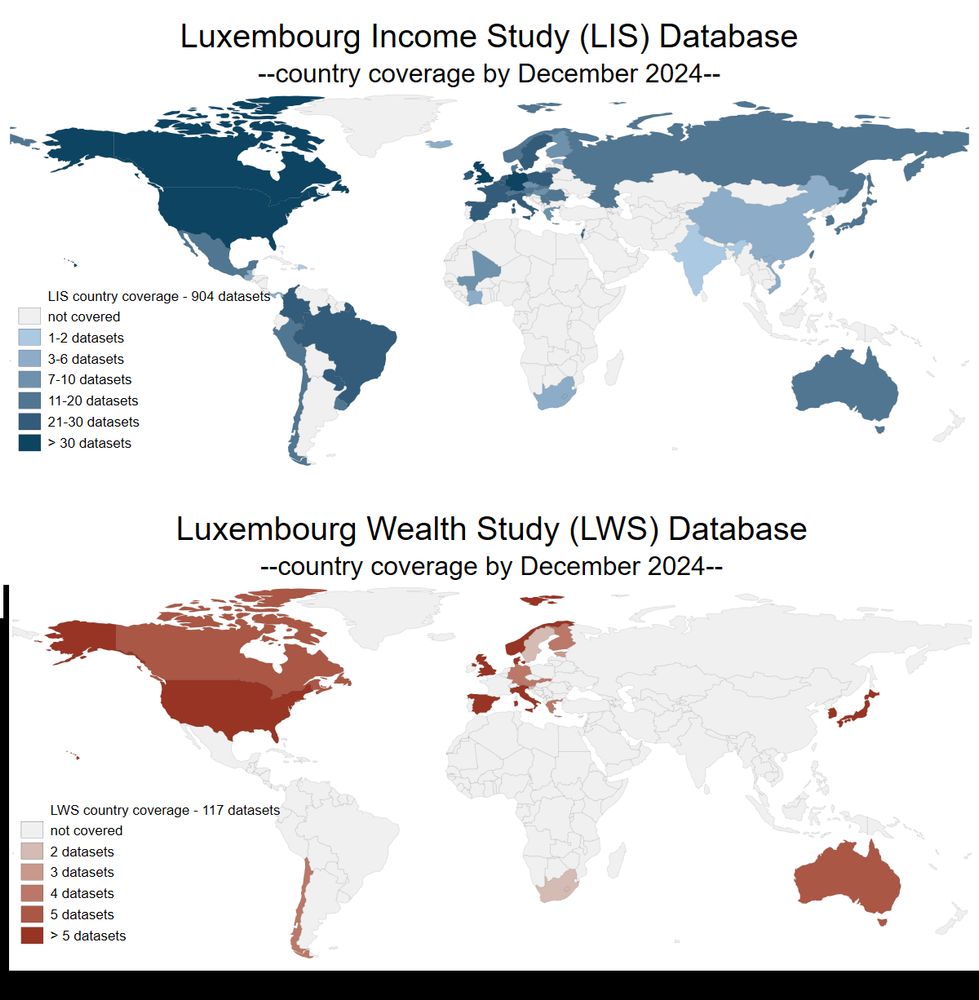
First post on Bsky! Hello world!
👇Since December 2024 the LIS & LWS databases contain more than 1000 datasets. This enables research on more than 30 Mio. households and 90 Mio individuals.
Explore our databases here: www.lisdatacenter.org/our-data/ #LISdata #inequality #poverty #research
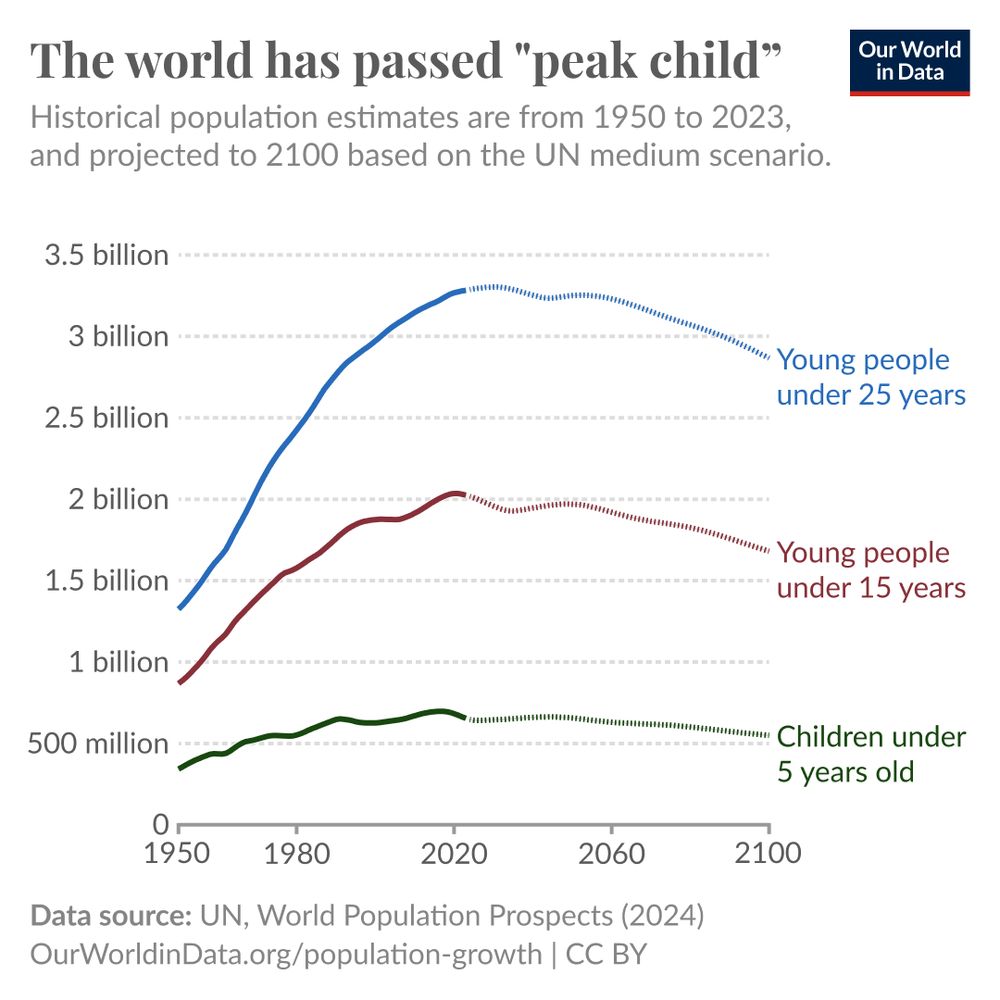
This chart titled "The world has passed 'peak child'" shows the historical and projected population of three age groups: young people under 25 years, young people under 15 years, and children under 5 years. Data spans from 1950 to 2100, based on UN estimates and projections. The blue line represents the population under 25 years, showing steady growth until around 2050 when it starts to slightly decline. The red line represents those under 15 years, peaking around 2020, and then gradually declining after that point. The green line shows children under 5 years, which has largely plateaued since the 1990s and is projected to decrease over time. The chart indicates that the global number of children has reached its peak, and a long-term decline in younger populations is expected.
The world has passed “peak child”
13.01.2025 18:18 — 👍 223 🔁 80 💬 10 📌 34Good overview on research on gender, violence, and harrassment 👇🏻
12.01.2025 17:02 — 👍 0 🔁 0 💬 0 📌 0
I am happy to share that our #LGBTQ paper reviewing the socioeconomic and health impact of same-sex marriage legalization is now in print in JPAM! 🎉 @appam.bsky.social
Huge thanks to my amazing coauthors @lbadgett.bsky.social Kitt Carpenter Maxine Lee
Check it out here: doi.org/10.1002/pam....

Nice podcast episode of the mixtape with my CUNY professor Ted Joyce: open.spotify.com/episode/01Ey...
06.01.2025 16:10 — 👍 0 🔁 0 💬 0 📌 0Link to the paper: www.ecuadorencifras.gob.ec/documentos/w...
04.01.2025 15:05 — 👍 0 🔁 0 💬 0 📌 0A couple of things to keep in mind while seeing these results: they were able to link only around 42% of the children in the cohort of interest, and mobility is estimated using a relatively young cohort (25-31).
04.01.2025 15:05 — 👍 0 🔁 0 💬 1 📌 0Eager to learn more about the Labor Market and Business Dynamics Laboratory (LDLE) of the National Institute of Statistics and Censuses (INEC), where data from censuses is integrated to other sources such as the civil registry..
04.01.2025 15:05 — 👍 0 🔁 0 💬 1 📌 0
Interesting WP estimating intergenerational mobility in Ecuador finds a rank-rank slope of 0.27, much lower than what was recently estimated in Brazil by Britto et al. using a "similar approach"
04.01.2025 15:05 — 👍 0 🔁 0 💬 1 📌 0
The rise of predatory "limbic capitalism" paulkrugman.substack.com/p/america-th...
23.12.2024 15:58 — 👍 723 🔁 179 💬 50 📌 31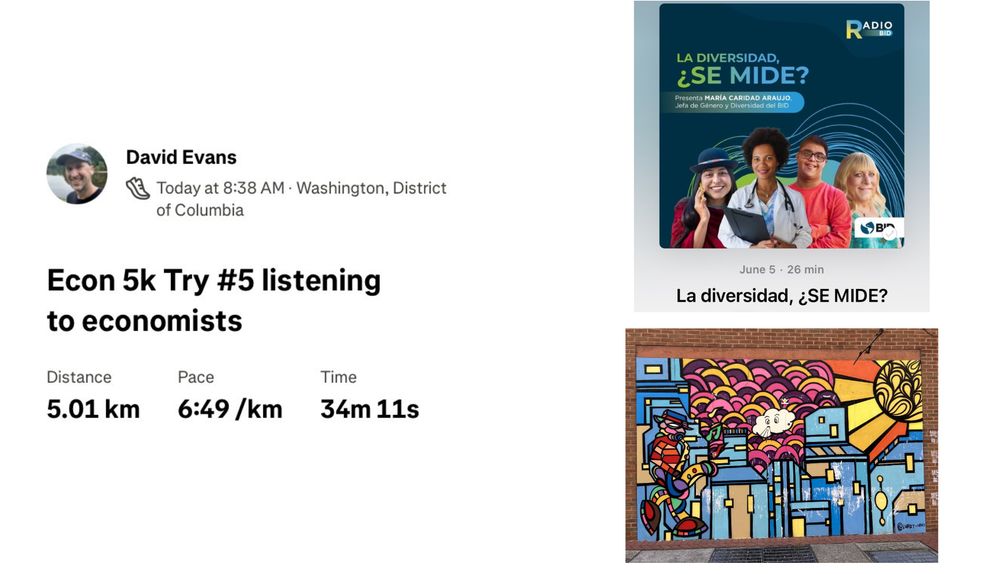
#Econ5k Try #5 while listening to economist @caridadaraujo.bsky.social discuss how data on diverse groups in Latin America can improve lives, with experts @ercio.bsky.social, Andrea Monje, Piedad Urdinola, and others.
www.youtube.com/watch?v=vKpg...
@econ5k.bsky.social



And to close the day, @ercio.bsky.social presented his work on sibling correlations across the world as a measure of inequality of opportunity.
Roughly 50% of the inequality in educational outcomes comes from inequality of opportunity. In Mexico is more

POSTDOCTORAL RESEARCHER in PUBLIC ECONOMICS
(“Drivers and consequences of rising economic inequality”)
Application deadline: 3 Jan 2025
Interviews: Interviews will be conducted remotely by video starting February, 2025.
econjobmarket.org/positions/11...